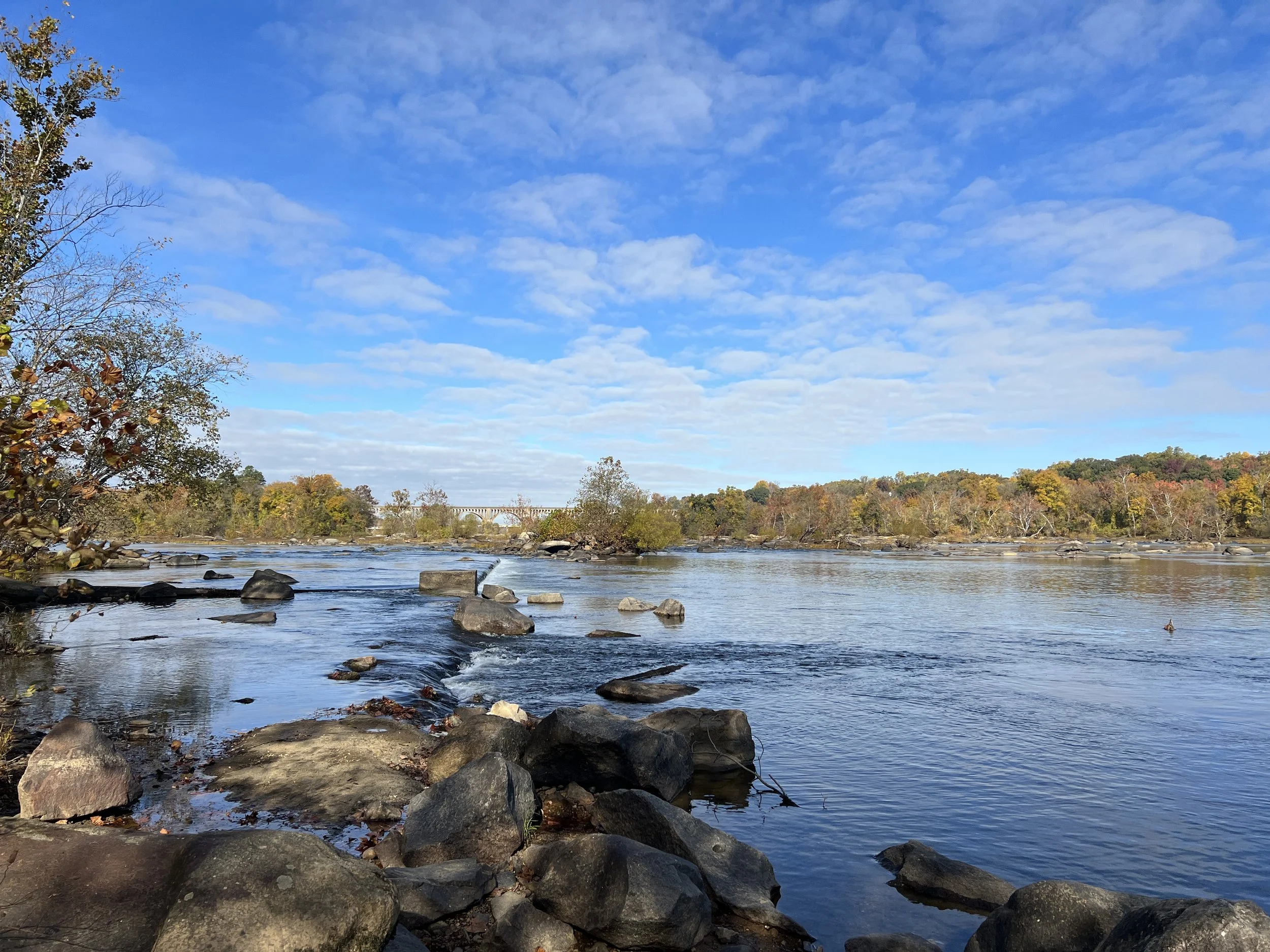Nickel Bridge
🅿️ Parking: Free street parking available on Riverside Dr. where it intersects with Westover Hills Blvd., specifically the 5000 block of Riverside Dr. Access to the river is available by walking down Westover Hills toward the start of the bridge and then accessing the start of the Buttermilk Trail (you will see a trailhead right before the bridge). Follow the trail until it goes underneath the bridge. Then, walk across the trail tracks, and you will see a small pathway to the river.
5000 block of Riverside Drive [https://goo.gl/maps/DemU7oGueF9NQ7Tj9] or 2009 area of Westover Hills Blvd. North [https://goo.gl/maps/CSKHW6umHxme24VD8]
⭐ Accessibility rating: 6/10
🛶 Kayak/canoe launch: There is no where to launch a kayak or canoe.
🐟 What to expect: Opportunities for trophy smallmouth and lots of variety
🍨 Inside scoop… Start deep and reap the benefits of big fish.
The Details:
Named the “Nickel Bridge” because of the 5-cent toll from the “good ole days,” the times have certainly changed and while we pay a bit more to cross this beautiful bridge overlooking the outskirts of the city and our beloved Maymont park, the river that runs below this bridge marks a wonderful stretch of the James. One of the neatest parts about this spot is the remarkable underground pipe that starts at the bridge and goes a few miles up river all the way to the train trestle. The pipe is easy to spot by the shore, as a large cement block towers out of the water (where people are usually sun bathing or on an intimate date) and it extends underwater for a few miles. It can be a challenge to navigate and follow when the water is above four feet, and the consequences are high if you fall on the downstream side of the river at the first section. If you decide to wade along the cement pipeline, please take caution and make sure you are comfortable swimming if you do fall off the edge.
As you navigate this stretch of the river, it’s important to know that the first section, marked by flat water that runs all the way from the bridge to the pipeline is really deep, like over 10 feet deep in places. What does that mean for fishing? Big fish! One of the biggest smallmouth caught last year was hooked right here in this deep section, so go deep with heavy jigs, and be prepared to hook a monster! After you hopefully contend with a healthy smallie, make your way up past the cement pipeline and cast on either side of the pipeline in the fast moving water. The left side of the river in this stretch looks juicy, but for some odd reason, I never have much luck. Give it a shot anyways, and please send us a photo if you’re successful. One of my favorite spots to fish in this section is around the first island you come across walking up river. You’ll most likely see a lot of sticks and logs piled up against this “island” (more like a 5 yard rock), but wade around it, casting into the structure, and you should have some decent luck. As you continue upstream, there are some nice little riffles to the right side of the pipeline. Try casting a heavy jig right where the water comes across the pipe. The smallies seem to love this area, probably due to the high amount of oxygen sitting beneath the cement overflow.
You can spend a full day just fishing this one section of the river, so pack a lunch and enjoy the scenery. Similar to many other spots on the James, the further you wade out on either side of the cement pipe, the more luck you will have. Anglers are lazy, so if you want to put in a bit more effort, you will often find greater success. As a note, it can get really low higher up toward the train bridge. If the water level is around 3.75 feet or lower, you will want to stick to the lower section where the deeper holes are more abundant.
Local tip: If you’re looking for a place to finally throw that deep water crank bait, this is your ticket. Give it a go right away at the first hole, and gear up for a fight.
If we were stuck with one lure: Bitsy bug jig (1/6 oz) with a chartreuse single tail grub. Let it hit the bottom, and cover water slowly.




